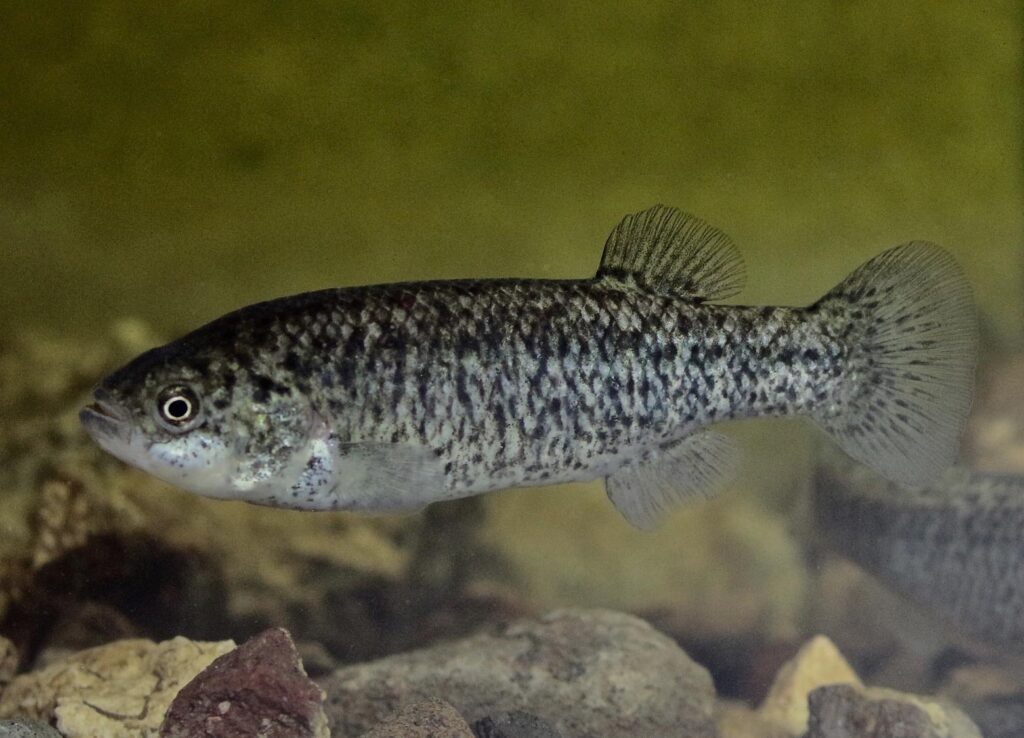The Springs Preserve (Preserve) is a 73-ha urban park in Las Vegas, Nevada. Before 1962, three springs flowed into riparian meadows at what is now the Preserve. These springs were once inhabited by the Las Vegas dace (Rhinichthys deaconi), an extinct fish species described from museum specimens in 1984. As part of a 20-year restoration effort, ponds were constructed in the dry Las Vegas Creek bed to rewild the federally endangered Pahrump poolfish (Empetrichthys latos), a species considered critically endangered by the IUCN. This endemic fish was extirpated in 1975 from Manse Spring in Pahrump Valley, Nye County, Nevada. Although Manse Spring was lost to groundwater pumping for agriculture, some fish were translocated proactively to establish refugia populations. Recently, two of these refugia were decimated by the illegal introduction of non-native species. The establishment of a population at the Preserve further protects the species from stochastic events that can lead to extinction.


